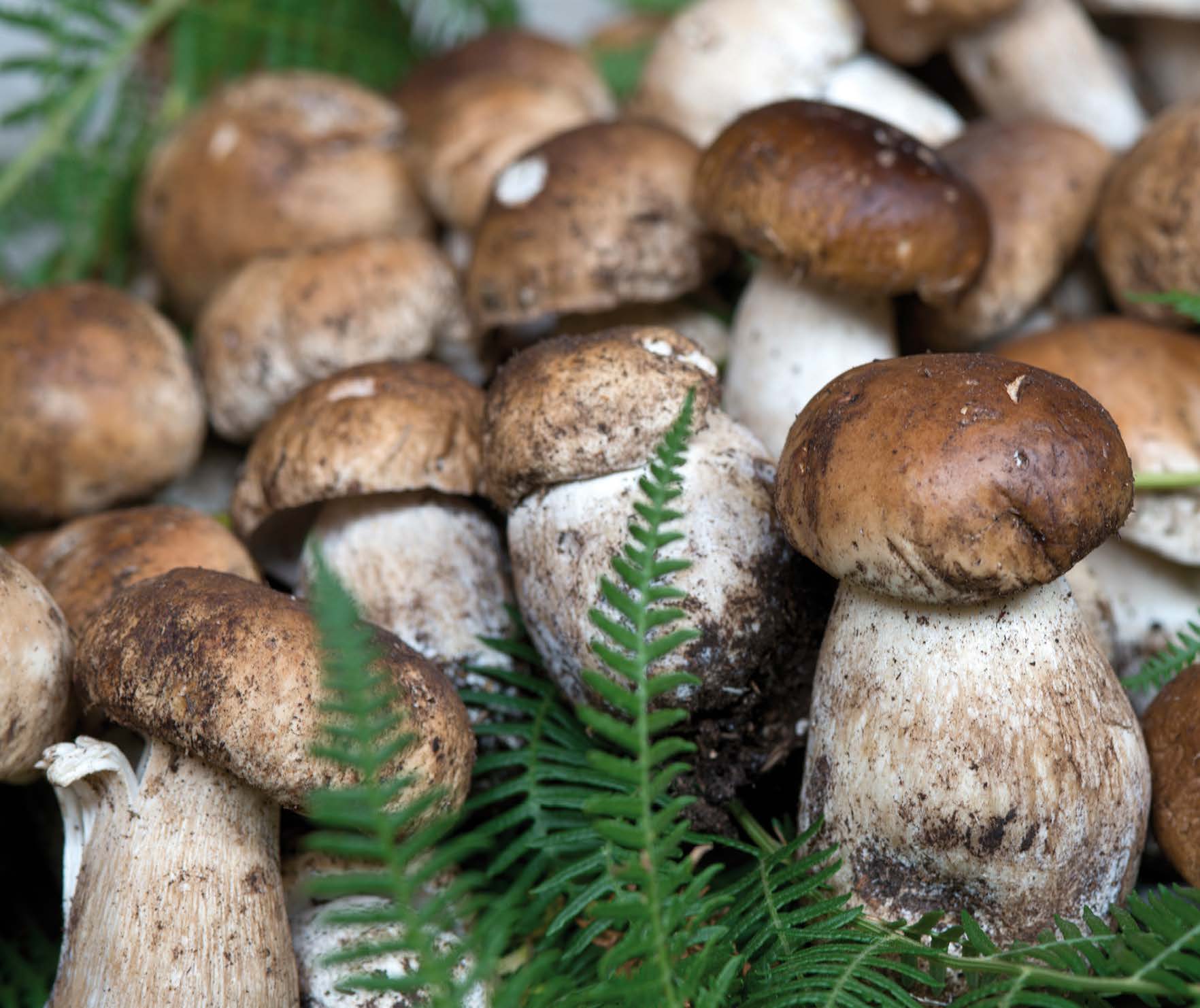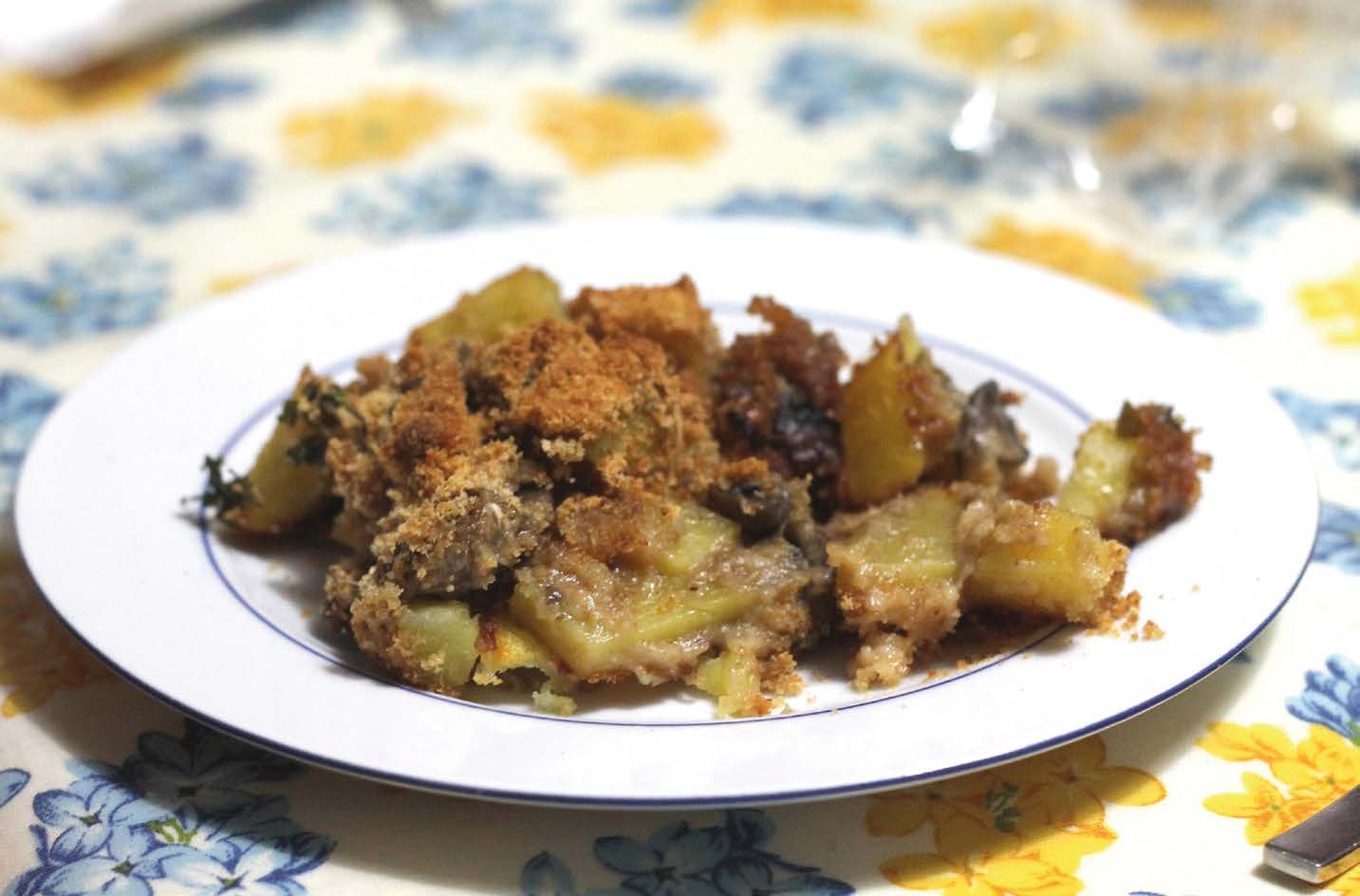Are we all mushroom "foragers"?
 The woods on the island of Ischia hold a special charm. Woods of chestnut, majestic oak, of the extremely dark – alternating silver and green holm oaks, and all that Mediterranean maquis of thatch, strawberry trees, myrtles, Pulici, and ferns from the beginning to the end.
The woods on the island of Ischia hold a special charm. Woods of chestnut, majestic oak, of the extremely dark – alternating silver and green holm oaks, and all that Mediterranean maquis of thatch, strawberry trees, myrtles, Pulici, and ferns from the beginning to the end.
Until before the war, the islanders living in the villages and towns (suburbs) higher up were almost exclusive “foragers” of mushrooms. Everyone extremely jealous of his own passed down and personal “places”, passed down from grandfather to son, and more often from grandfather to grandson. The mushroom hunter waits for rain as if it were manna.
Then hopes for a more than mild temperature, keeping fingers crossed against strong winds and sudden drops in temperature.
The calendar is marked and patiently, hopefully, dreamily, they wait. If everything is perfect, it begins... the mushroom forager finds himself wandering through the woods and briars –well known places of the soul, stone by stone, year after year –beating trails, trodden through with alternating fortune. In good weather, in the heat, amidst rain drenched thorns and herbs filled with dew, crispy chestnut leaves or soft-smelling moss. Nothing stops the mushroom hunter. When the time is right he’s off.
In the heart of the Mediterranean, Ischia is our unique, special small Madagascar, a land of fire, sea, sun, capricious vapours, flavours and sounds; its soil which patiently still benefits us with juicy fruits, figs sweeter than honey, grapes with stirring properties, could but not donate mushrooms. Its climate - and, therefore, its microclimates - is not like those more suitable for mushroom picking in the hinterland of Avellino or Benevento, where often during summer afternoons, it rains, allowing for the growth and harvesting of the sought after porcini mushroom.
Here on Ischia it is a little different. It could not be otherwise: the summer almost always stretches on nice and dry for months, pleasing holidaymakers who, like lizards, soak up and metabolize the scorching sun. However mushroom pickers await the first rains of mid-September in trepidation but more often than not those of early October, or even November; hoping for mild and warm weather, (perhaps with the south wind and dew) for 13-15 days in a row. Only then, when all conditions are optimal and there have been no sudden drops in temperature and above all fresh winds are sustained, does the ‘forage’ begin. For some ten years or so, due to the increase of traffic and paths and cart roads becoming more accessible, hunting for porcini has become somewhat a fad, standardized and often indiscriminate.
In an effort to remedy this, in recent years controls and regulations have become more constant. Even the initially reluctant islander, has had to study in order to obtain the necessary mycological identification card.
Quantitatively, the island is not at the level of “game bags” claimed on the mainland. However the scent and taste of mushrooms collected in Ischia, is incomparable to others. Besides the late autumn and winter species are many and exceptionally tasty (for those who know them, know how to gather them and above all how to cook them).
Regarding the cuisine – other than the usual mix of fried mushrooms - every mushroom requires a different way of cooking. Each mushroom has a way, unique and “Ischian” to be prepared, cooked and eaten. One should never rely on popular, empirical beliefs or hearsay. Mycology is a science in continuous and constant evolution. Mushrooms which previously were consumed in large quantities are now considered inedible or toxic. For example the Clitocybe nebularis, a late-winter mushroom can still to be found in large quantities. On Ischia – risk making- yet continued to be eaten after repeated boiling -is the poisonous Boletus Satanas, the famous Capone. Care must be taken with “mature” mushrooms with bloom on the cap ( see Orecchioni or Chiodini), and to the too woody stems of chiodini (which by the way evolve a marked toxicity when frozen).
These as other hosts of pearls of wisdom, are to make it understood that mushrooms are not to be messed with, always trust and rely on professional mycologists.
Authorization for the collection and rules
Authorization “for the collection of edible wild epigeal mushrooms “ issued by the Metropolitan City of Naples (Forestry Office), is achieved after passing an examination, it is personal and not transferable, and valid for five years, validated by the payment made each year. There are different though simple and obvious rules to follow: three kilos of mushrooms per day may be picked (only 1 for Blackthorn and Ovolo species). Care must be taken for the minimum size of the cap: 3 cm. For normal size and 2 cm. for small sizes.
Do not use rakes or hooks; do not destroy the soil. Clean the mushrooms at the base on site and place them in containers allowing for mature spores fall to the ground. Mushrooms may be searched for from one hour before to one hour after sunset. Fines range from a minimum of € 50 to a maximum of € 300 for those who are not in possession of the identification card. Heavier fines for those selling and trade illegally.
Controls may be effected by all relative institutions although mainly by the State Forestry Corps.
Mushrooms on the Island of Ischia
Mushrooms on the island can be found almost everywhere.
Depending mainly on the species and the particular period of the year. A heavily frequented area, especially by “Sunday pickers”, is il bosco della Maddelena. A set of two distinct biotypes forests: holm oak, oak and stone pine. The undergrowth has all the characteristics of the true Mediterranean maquis: shiny and evergreen arbutus (strawberry trees), fragrant mastic trees, myrtle and heather, dense brambles; brooms, “thatch”, cysts, ivy, laurel, wild robia, valerian, calamint, etc. Here, in addition to porcini mushrooms, Chiodini and Chanterelle, there is an impressive explosion of variety in the oak groves in autumn.. In the adjacent pine wood, more so when up to twenty years ago when the trees were still young, there can still be found - sometimes plentiful and abundant – the scented Monetole Pigna and red Lattarole, in addition to Russule and the colourful Lattari. In spring the tasty Dormienti and delicate Spugnole.
The chestnut groves of Fondo Ferraio, Rotaro, Buceto, Toccaneto or Falanga, are home to all types of boletus, varieties of Monetole, Russule, and Cantarelli .. Burnt herbs and the broom of Frassitelli and Epomeo are coated by the crispy Cardoncelli (the unsurpassed Broom fungus). The steep mountain of Vezzi as and that of Campagnano bestow boletus and beautiful Ovoli beni. Santa Maria al Monte and the mighty Punta Imperatore, the spectacular B. edulis and Aereus. In late autumn beneath the holm oaks of Montagnone, sprouting yellow Natalini, Ferrigni and massive Mazze di tamburo. Still more in the canyons of Pelara and Scannella; in the herbs and between the rocks of Zaro, massive Edulis hard as stones sprout. At the end of the season hidden in the soft carpets of mosses and lichens, between common and rare ferns, there are numerous and crumbly Funghi Farina. Along country lanes, early in the season, various kinds of Pratoaioli can be found, while in late autumn also Tricolomi, violet Lepista Nuda and the very delicate ink mushroom (Coprinus comatus). In mid season, beneath the most impenetrable tangle of brambles, large clumps of Chiodini can be found and with the patience of the “cook martyr” of the moment, will be picked over and preserved in oil, to sit on cupboard shelves awaiting lean times . Then, opening a jar and seasoning a salad with a handful of Chiuvitielli, perfumes the palate, the house and the spirit with the scent of the woods.
Mushrooms dishes
To whet the appetite listed below are only a few ideas:
- Linguine pasta with cherry tomatoes and lattarole (lactifluus volemus) - Mazza di Tamburo (Macrolepiota Procera) breaded and fried - Ciurilli (Cantarellus Cibarius), Lattarole (lactifluus volemus) and porcini (Boletus edulis, Aereus) breaded and fried - Mushroom Risotto with Funghi Farina (Hidnum repandum) and Lardaioli (Hygrophorus russula) - Funghi del Sangue (Lactarius Sangiufluus, Lactarius Deliciosus) oven baked - Ovoli (Amanita Caesaria) and Greenfinches (Russula virescens) as a raw salad - Coprini (Coprinus comatus) fried in butter - Cardoncello (Pleurotus eryngii) with pasta - Chiodini (Armillaria mellea) on short pasta.
A special recipe
This article could not conclude without one of my special recipes. It’s un-resistible.
Sanguinelli gratin: Choose the most intact, hard and flattened Sanguinelli (Lactarius Lactarius Sanguifluus or Deliciosus).
Remove the stems and set aside, carefully cleaning beneath the caps, placing them upturned on a baking tray covered with greaseproof paper. Using a half moon slicer and a cutting board slice the mushroom stalks, chop a little garlic, a little Neapolitan salami, parsley, peppercorns and, and extra virgin olive oil to taste, mix into a paste by adding breadcrumbs. Season with salt and place the mixture (which should be soft and not greasy) onto the upturned mushroom caps on the baking tray. Sprinkle with Parmesan cheese and bake 180c for about 15-20 minutes. Serve with a piece of soft cheese and crostini (preferably fried in an oiled frying pan.
Enjoy your meal!

di Pino Macrì
